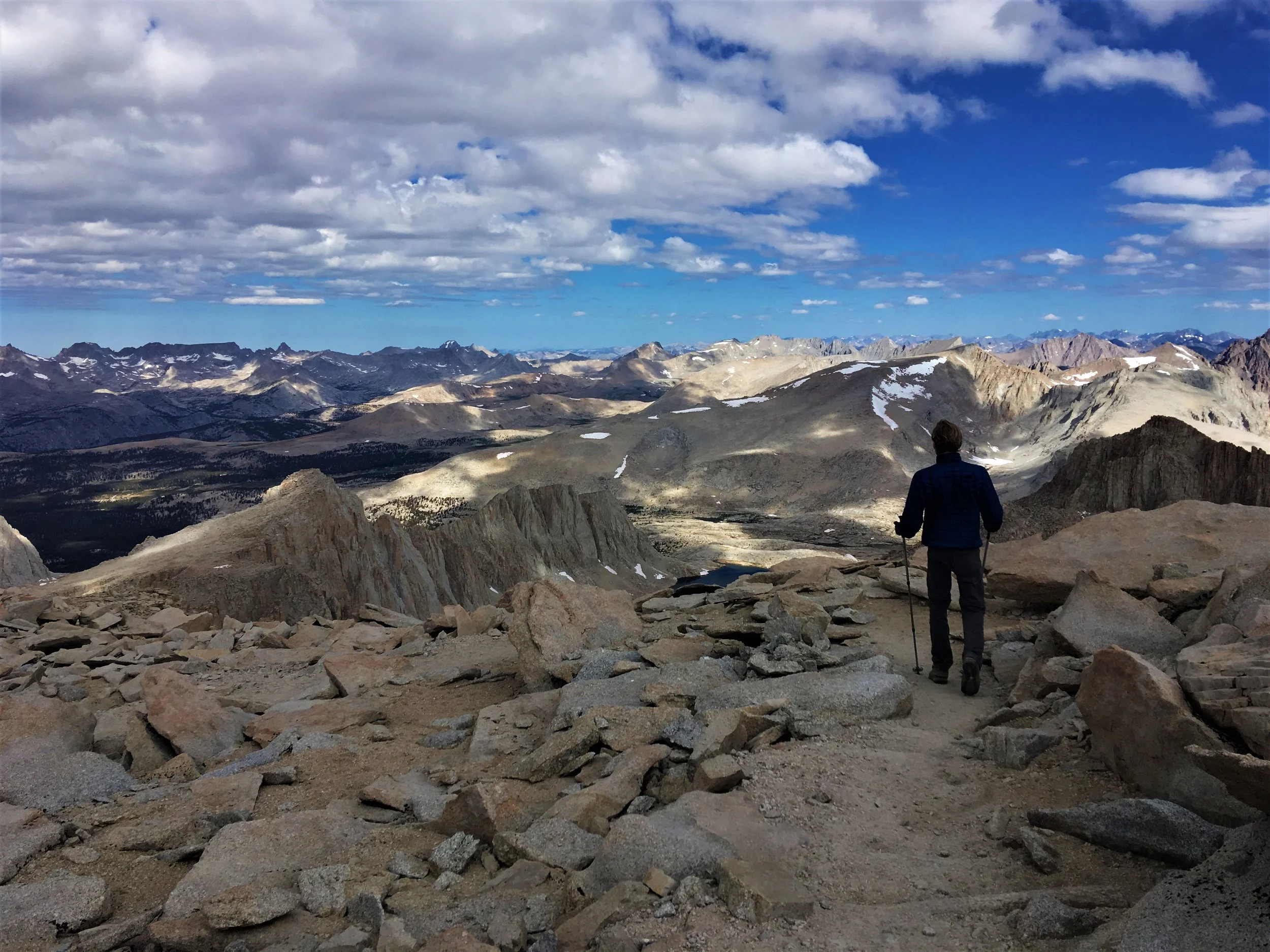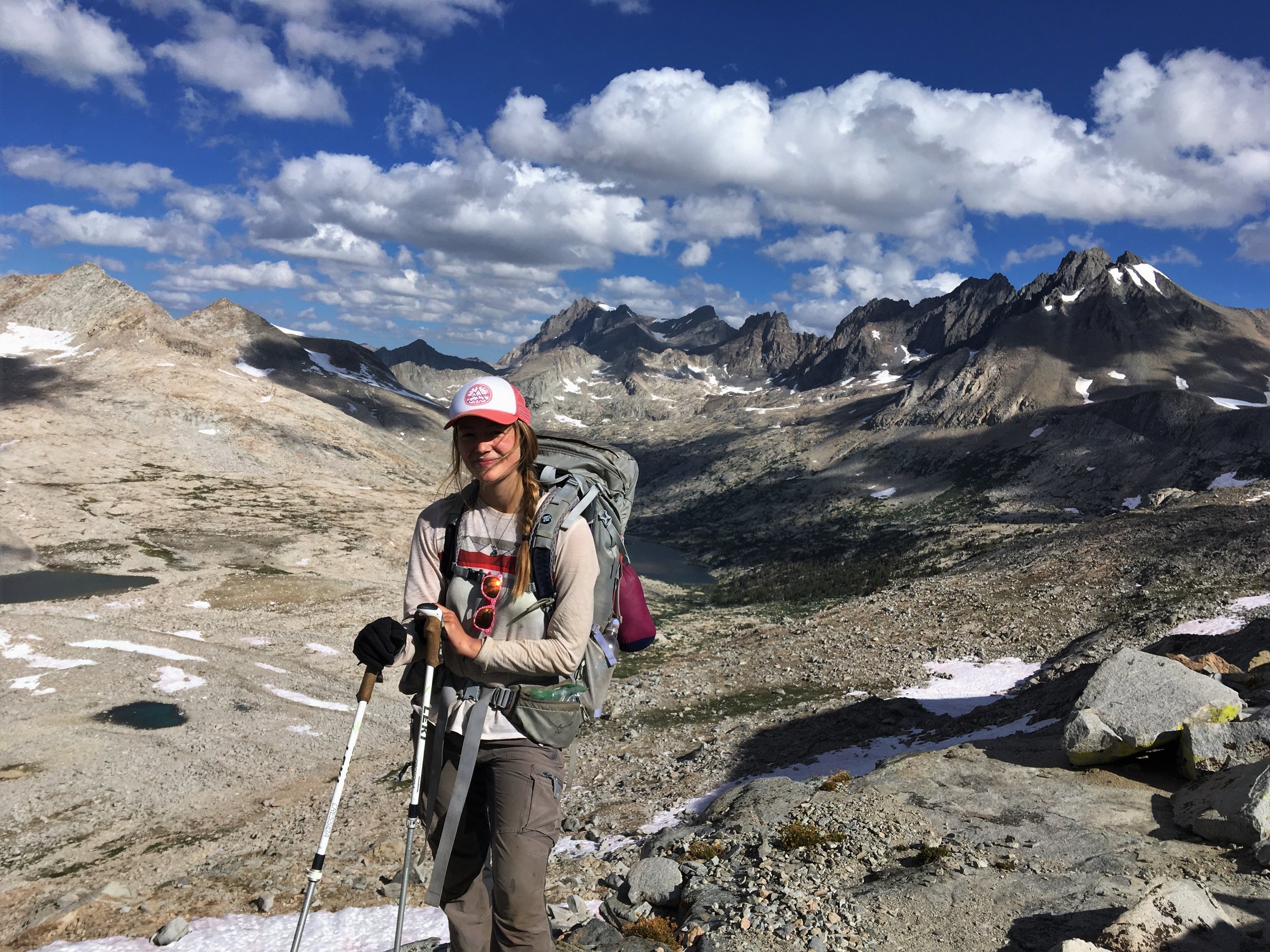Altitude sickness (acute mountain sickness or AMS) is your body’s response when you climb to higher elevations too fast. It can be anything from mildly annoying to fatal, and it’s important to familiarise yourself with symptoms and prevention tips before going on a high-elevation hike. Symptoms of AMS include headache, appetite loss, trouble sleeping, nausea/vomiting, fatigue, shortness of breath and dizziness. Some people also experience nose bleeds and diarrhoea. In other words, not fun! However, there are ways to both prevent and cope with the symptoms, and your body adapts to altitude over time. Hikers on popular trails like the John Muir Trail or the Annapurna Circuit will undoubtedly become familiar with varying degrees of AMS.
Interestingly, how people react to high altitude is not dependent on their age or physical shape. You’d think a fit hiker would fare considerably better than a couch potato – wrong! Scientists are unsure of which factors impact the way we react to decreasing oxygen levels in the air. In other words, you might get lucky, but you might also struggle more than expected – and there isn’t much you can do about it.
Oxygen break while heading up Forrester Pass (4000 m)
What happens when you hike at high altitude?
At high altitudes, the oxygen levels in the air decreases. At extreme elevations (5500+m) it’s advisable to carry supplementary oxygen. Your red blood cells have to work harder to carry oxygen around your body, which reduces “fuel” to your muscles and organs. Less oxygen flow to your brain can impact your alertness and decision-making capabilities. Increased rates of water vapour loss from your lungs in thin air can cause dehydration, which will make AMS symptoms worse.
Above 8000 m the human body is unable to acclimatise – this is known as the death zone. Therefore, it is paramount to limit the time spent at this altitude. I will never hike at those altitudes (I wanna live), but this guide is useful to all sorts of moderate-altitude hikes!
So, how do you prevent altitude sickness?
Mt Whitney, the highest point in the contiguous US (4421 m). After 21 days at 3000+ m, I was fine here.
Acclimatise, acclimatise, acclimatise
Nothing can replace the time you spend gradually gaining altitude before you reach high points. It’s generally recommended to spend at least two nights at close to the same altitude as you’ll be hiking at to minimise the risks of altitude sickness. Don’t exercise during this time, it’s enough for your body to take in the challenge while resting. We spent a couple of days in Lake Tahoe to acclimatise for the JMT.
So how high is high enough to practice? Most people start to feel the effects of altitude at around 2500m (which is why the cabin pressure in commercial airplanes is set to equal about this height – would be a shame if people started puking and fainting in there…). Below this altitude, the effects of acclimatisation will be minimal. You can start somewhere at 2500-3000m and work your way up depending on how you feel. I was surprised at how early I felt the effects of thin air, and I didn’t feel properly acclimatised until I’d hiked at 3000+ m for over two weeks. This will be different for everybody.
Drugs like Diamox/Acetazolamide can aid the acclimatisation process, you should start taking these a few days prior to your trek. IMPORTANT: medication does not replace acclimatisation, so don’t skimp on the other tips!
Mather Pass (3688 m), not a great camp spot.
Go high, sleep low
The effects of high altitude are usually most pronounced at night. Trouble sleeping is a very annoying and common symptom of your body’s struggle to adapt. Therefore, a good rule of thumb is to not climb more than 1000 feet/350 m between each camp. Mountaineers who climb Everest take several trips up and back down between the base camps, they don’t just go straight for the summit. Also, incorporating rest days so your pulse can just chill will aid your acclimatisation.
*Additional tips: staying hydrated is super important. Many people, myself included, find that it sometimes helps to snack often – M&Ms are great for this. Stay away from alcohol and cigarettes (this should be self-evident).
Camp below Silver Pass, at 3100 m. The site of my AMS experience.
Performance impact
The lack of oxygen will hamper your performance to varying degrees. The clue is to not get too frustrated at having to take things slow. I found it especially difficult to keep up a good pace on the climbs. Everything was just so much harder! We solved the uphill problem by going e-x-t-r-e-m-e-l-y slow, and that reduced our fatigue both while hiking and in camp considerably. Highly recommended! Also, blowing up my Thermarest pad took forever, I would have fainted if I’d blown big, fast breaths like I usually do. It’s the strangest feeling to take a breath and not feel like you’re breathing… because the oxygen just isn’t there.
My experience with altitude sickness was a classic result of overexertion. On day 4 of the JMT, we were so eager to get to camp that we rushed up the long climb from Tully Hole to Squaw Lake beneath Silver Pass. The climb itself wasn’t so bad, but that night I was so nauseous, couldn’t sleep and felt like I couldn’t breathe. It was incredibly uncomfortable, and my fear of getting really sick only made it worse. Taking big, deep breaths, staying warm in my sleeping bag and drinking lots of water helped.
On the upside, coming back to sea level after a high-altitude hike feels amazing! It’s like breathing underwater (without the drowning), the air is so rich and moist you feel like you only need a couple of breaths per minute, and you could still run a marathon. Los Angeles after the JMT was pretty rad.
Climbing into the sky on the Golden Staircase towards Lower Palisade Lake, taking it s-l-o-w
Warning signs – when to get down fast
There are two kinds of severe altitude sickness: high altitude pulmonary edema (HAPE) and high altitude cerebral edema (HACE). HAPE involves your lungs filling up with fluid, for HACE the same occurs in your brain. Both can be life-threatening, and the only remedy is getting down fast and receiving supplementary oxygen. If you experience symptoms like loss of coordination, severe headaches, confusion, persistent vomiting or coughing up froth/blood you are in trouble. Hikers die from HAPE and HACE every year, especially in remote locations like the Himalayas. Listen to your body, take care of your hiking companions and be prepared to act fast if something doesn’t seem right. Don’t risk your health to reach a summit! As always: the best medicine is prevention.
Happy high trails!






